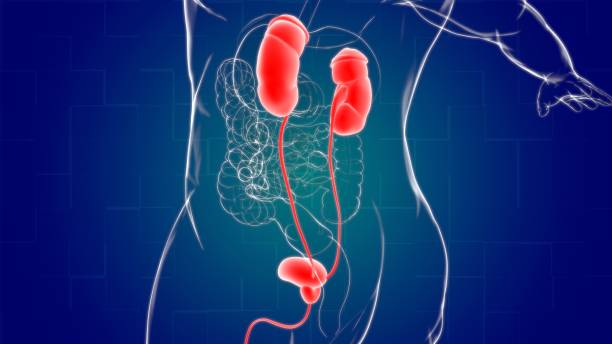Health, Joint Health
Uric Acid vs. Urea – Understanding the Key Differences
The field of biochemistry frequently presents a maze of jargon and notions that may be confusing to the untrained. Among these, the contrast between uric acid and urea is a common source of confusion, given their similar-sounding names and responsibilities in the body’s waste removal systems. Despite their similar relationship with the excretory system, they are separate substances with distinct characteristics and activities.
The purpose of this article is to shed light on uric acid and urea, including their chemical structures, physiological roles, and health consequences. By examining the contrasts between these two molecules, readers can obtain a better grasp of their respective roles in metabolic processes and their importance in general well-being.

Chemical Composition and Production
Uric Acid Synthesis and Purine Metabolism
Uric acid is a heterocyclic molecule that has the chemical formula C5H4N4O3. It is a nitrogenous waste product produced by the degradation of purines, which are nitrogen-containing molecules present in nucleic acids. Certain foods include purines, including organ meats, anchovies, and sardines.
Uric acid is predominantly synthesized in the liver, where the enzyme xanthine oxidase converts xanthine and hypoxanthine to uric acid. Other tissues, such as the colon and the lung, contain xanthine oxidase, but it plays a minimal role in uric acid synthesis.
Urea Cycle and Liver Function
In contrast, urea is a simple organic molecule having the molecular formula CO(NH2)2. The urea cycle is a set of enzyme activities in the liver that convert ammonia and carbon dioxide into urea. This cycle is responsible for the elimination of excess nitrogen from the body, which can be hazardous if it accumulates.
The urea cycle involves a number of enzymes and amino acids, including arginine, ornithine, and citrulline. The cycle occurs predominantly in the liver, but other tissues, such as the kidneys, play a part.
Liver function is essential for the synthesis of uric acid and urea. The liver is responsible for the metabolism of a wide range of chemicals, including medicines, poisons, and nutrients. It also plays an important function in protein metabolism, providing nitrogen for both uric acid and urea synthesis.
To summarize, they are two nitrogenous waste products that have distinct chemical compositions and manufacturing processes. Uric acid is made by the breakdown of purines, whereas urea is produced via the urea cycle in the liver. Both are necessary for the excretion of nitrogenous waste from the body and require adequate liver function for production.

Physiological Roles and Excretion
Uric acid and urea are two distinct molecules with separate physiological functions and excretory routes. Purine metabolism produces uric acid, whereas protein metabolism produces urea. Both chemicals are eliminated by the kidneys, although their routes differ.
Excretory Pathways for Uric Acid and Urea
The body excretes uric acid primarily through urine. The glomeruli in the kidneys filter it before reabsorbing or secreting it through the tubules. Urea, on the other hand, is eliminated from the body primarily by urine, but also through sweat and feces. It is filtered by the kidney’s glomeruli and reabsorbed by the tubules before being discharged.
Kidney Function and Nitrogen Balance
The kidneys perform an important function in the elimination of uric acid and urea. Kidney function is critical for regulating nitrogen levels in the body. Nitrogen is a component of protein, and its breakdown produces urea. The kidneys remove urea from the blood and expel it in the urine, which helps to maintain nitrogen balance.
In contrast, uric acid is a waste product of purine biosynthesis. It is not poisonous in its soluble form, but it can create complications if it crystallizes and forms kidney stones. The kidneys prevent the production of uric acid crystals by excreting excess uric acid in the urine.
In conclusion, they are two distinct substances with distinct physiological functions and excretory processes. Both are eliminated by the kidneys, although their routes are different. The kidneys play an important function in maintaining nitrogen equilibrium in the body and preventing the production of uric acid crystals.

Health Implications and Disorders
Gout and Uric Acid Crystals
Gout is a kind of arthritis characterized by the buildup of urate crystals in joints. Urate is a result of purine metabolism and is generally eliminated from the body via urine. However, when the body creates too much urate or the kidneys are unable to eliminate it adequately, urate crystals can accumulate in the joints, causing inflammation and pain.
High amounts of uric acid in the blood, also known as hyperuricemia, are a key risk factor for gout. Purine-rich foods, such as red meat, seafood, and alcohol, might cause the body to produce more uric acid. People with gout should avoid these items and eat a healthy diet.
Renal Failure and Urea Accumulation
Urea is a waste product created by the liver as it breaks down proteins. It is eliminated from the body through urine. When the kidneys do not work properly, urea accumulates in the blood, causing a disease known as uremia. This might result in a variety of symptoms, including exhaustion, nausea, and confusion.
Renal failure is a common cause of uremia. Diabetes, high blood pressure, and other kidney-related diseases all raise the risk of kidney failure. Kidney failure treatment options include dialysis or a kidney transplant.
In conclusion, uric acid and urea are two distinct waste products that are eliminated from the body by different ways. Gout can be caused by high amounts of uric acid in the blood, whereas uremia can be caused by an increase in urea. Proper management of these problems entails eating a balanced diet, treating underlying health issues, and obtaining medical attention as needed.
Conclusion
Uric acid and urea are different molecules, however they have certain similarities. Metabolism produces urea in the liver and uric acid in numerous organs. Uric acid is excreted by feces and urine, while urea is mostly eliminated through urine.
The differences between uric acid and urea go beyond function. Urea dissolves easily in water, but uric acid does not. Body urea is substantially more plentiful than uric acid. The liver converts urea to ammonia, while the kidneys break down uric acid and excrete its byproducts in urine.
Genetics and aging also affect uric acid and urea metabolism. Gout occurs in persons genetically prone to create more uric acid. Age can also affect how the body metabolizes these chemicals, resulting in greater blood uric acid levels.
Understanding the differences between these two helps prevent gout and maintain health. They have different roles and qualities despite their similarities.
Trusted Health, Wellness, and Medical advice for your well-being


